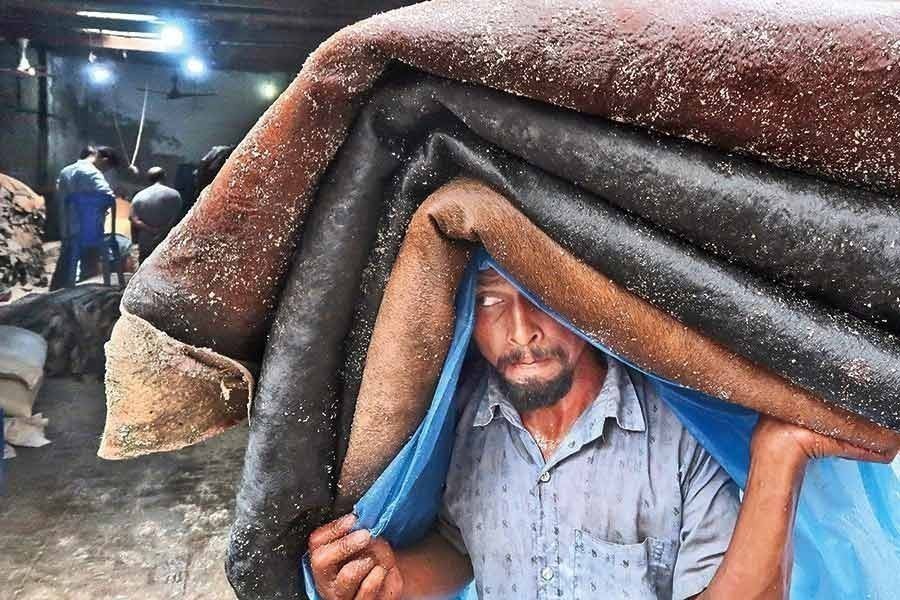
Published :
Updated :

The gloomy look of the tanners during the days of Eid-ul-Azha in 2020 and 2021 still haunts many. Apart from them, these people include rawhide traders at different stages. In 2022, the enterprising villagers selling their cattle, cattle farm owners and the rawhide traders look to recouping their losses incurred in these two years, especially in 2021. In the two years, the corona pandemic was raging throughout the country. The ambience of distress on the otherwise festive occasions stemmed chiefly from the unsold rawhides left on the roads in piles due to their appallingly low prices and the problem in preserving them. In 2021, the cities of the country, Dhaka in particular, were under a strict Covid-19 lockdown. Still the number of people sacrificing cows and other animals was more than in the previous year of 2020, which was also not spared the assault of the pandemic. The remarkable rise in the sacrificial animals in 2021 was presumably prompted by the dull cattle market the year before.
The country having being largely corona-free this year with no lockdown being in force, cattle traders and those dealing in rawhides and skin were preparing for last-ditch efforts to recover the losses of the last two years. Perhaps prompted by this objective of ensuring their very survival, the tanners this year have sought Tk 6.0 billion as bank credit in favour of their industry. The credit is aimed at collecting the rawhides and skin of the animals sacrificed on the day of the Eid-ul-Azha. Bangladesh Tanners' Association has placed the veritably emergency request to the Ministry of Commerce (MoC), so that they can avail of bank loans and meet their requirement of capital for purchasing rawhides. At the same time, the association has urged the MoC to ensure supply of salt, an ingredient required for rawhide preservation, and prevent its artificial price hike. Sufficient quantity of salt is required to completely saturate the rawhides and skin so as to stave off any bacterial growth. The rawhides have to be treated with 40 to 50 per cent salt.
The salting is followed by proper storage of the hides across the country. At present, there are 300 warehouses across the capital, apart from more than 1,600 makeshift warehouses. According to leather technologists, proper storage is the key to ensuring quality rawhides and fair prices. Across the country at the moment, there are 5,000 rawhide storage facilities. Unfortunately, they end up being warehouses not guided by a common set of preservation rules. This has led to different kinds of rawhide treatment procedures leading to a confused situation. The low impression abroad about the country's rawhides and skin is, thus, the inevitable outcome. People involved with the country's rawhide conservation process have, thus, mooted the idea of a central storage facility in Dhaka, preferably in the Savar industrial zone.
In reality, the quality of hides and skin is better handled from the very primary stage, like through the flawless skinning after the animals' slaughter. It is followed by the rawhides' preservation with proper salting, which can help the products last for several months. It is, indeed, painful to watch the state of cattle slaughtering and its aftermath which spoil a formidably large volume of rawhides. It could be an immense foreign exchange earner even in the pandemic times.


 For all latest news, follow The Financial Express Google News channel.
For all latest news, follow The Financial Express Google News channel.